Search for Indicators
All Data
Indicator Gauge Icon Legend
Legend Colors
Red is bad, green is good, blue is not statistically different/neutral.
Compared to Distribution
 the value is in the best half of communities.
the value is in the best half of communities.
 the value is in the 2nd worst quarter of communities.
the value is in the 2nd worst quarter of communities.
 the value is in the worst quarter of communities.
the value is in the worst quarter of communities.
Compared to Target
 meets target;
meets target;  does not meet target.
does not meet target.
Compared to a Single Value
 lower than the comparison value;
lower than the comparison value;
 higher than the comparison value;
higher than the comparison value;
 not statistically different from comparison value.
not statistically different from comparison value.
Trend

 non-significant change over time;
non-significant change over time; 
 significant change over time;
significant change over time;  no change over time.
no change over time.
Compared to Prior Value
 higher than the previous measurement period;
higher than the previous measurement period;
 lower than the previous measurement period;
lower than the previous measurement period;
 no statistically different change from previous measurement period.
no statistically different change from previous measurement period.
State: Kansas
Community / Social Environment
Value
Compared to:
State: Kansas Social Associations County Health Rankings
State: Kansas Social Associations
13.2
Membership associations per 10,000 population
(2021)
Compared to:
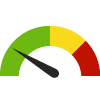




U.S. States
The distribution is based on data from 50 U.S. states and the District of Columbia.

US Value
(9.1)
The regional value is compared to the national value.

Prior Value
(13.2)
Prior Value compares a measured value with the previously measured value. Confidence intervals were not taken into account in determining the direction of the comparison.

Trend
This comparison measures the indicator’s values over multiple time periods.<br>The Mann-Kendall Test for Statistical Significance is used to evaluate the trend<br>over 4 to 10 periods of measure, subject to data availability and comparability.
State: Kansas
Community / Transportation
Value
Compared to:
State: Kansas Community Spending on Transportation Claritas Consumer Spending Dynamix
State: Kansas Community Spending on Transportation
18.1%
(2023)
Compared to:



US Value
(17.4%)
The regional value is compared to the national value.

Prior Value
(18.1%)
Prior Value compares a measured value with the previously measured value. Confidence intervals were not taken into account in determining the direction of the comparison.
State: Kansas Gasoline and Other Fuels Spending-to-Income Ratio Claritas Consumer Spending Dynamix
State: Kansas Gasoline and Other Fuels Spending-to-Income Ratio
3.4%
(2023)
Compared to:



U.S. States
The distribution is based on data from 50 U.S. states and the District of Columbia.

Prior Value
(3.5%)
Prior Value compares a measured value with the previously measured value. Confidence intervals were not taken into account in determining the direction of the comparison.
State: Kansas Households without a Vehicle American Community Survey 5-Year
State: Kansas Households without a Vehicle
5.1%
(2018-2022)
Compared to:
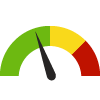



U.S. States
The distribution is based on data from 50 U.S. states and the District of Columbia.

US Value
(8.3%)
The regional value is compared to the national value.

Trend
This comparison measures the indicator’s values over multiple time periods.<br>The Mann-Kendall Test for Statistical Significance is used to evaluate the trend<br>over 4 to 10 periods of measure, subject to data availability and comparability.
State: Kansas Mean Travel Time to Work American Community Survey 5-Year
State: Kansas Mean Travel Time to Work
19.7
Minutes
(2018-2022)
Compared to:
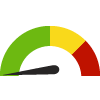



U.S. States
The distribution is based on data from 50 U.S. states and the District of Columbia.

US Value
(26.7)
The regional value is compared to the national value.

Trend
This comparison measures the indicator’s values over multiple time periods.<br>The Mann-Kendall Test for Statistical Significance is used to evaluate the trend<br>over 4 to 10 periods of measure, subject to data availability and comparability.
State: Kansas Solo Drivers with a Long Commute County Health Rankings
State: Kansas Solo Drivers with a Long Commute
21.6%
(2018-2022)
Compared to:





U.S. States
The distribution is based on data from 50 U.S. states and the District of Columbia.

US Value
(36.4%)
The regional value is compared to the national value.

Prior Value
(21.7%)
Prior Value compares a measured value with the previously measured value. Confidence intervals were taken into account in determining the direction of the comparison.

Trend
This comparison measures the indicator’s values over multiple time periods.<br>The Mann-Kendall Test for Statistical Significance is used to evaluate the trend<br>over 4 to 10 periods of measure, subject to data availability and comparability.
State: Kansas Workers Commuting by Public Transportation American Community Survey 5-Year
State: Kansas Workers Commuting by Public Transportation
0.4%
(2018-2022)
Compared to:
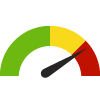




U.S. States
The distribution is based on data from 50 U.S. states and the District of Columbia.

US Value
(3.8%)
The regional value is compared to the national value.

Trend
This comparison measures the indicator’s values over multiple time periods.<br>The Mann-Kendall Test for Statistical Significance is used to evaluate the trend<br>over 4 to 10 periods of measure, subject to data availability and comparability.

HP 2030 Target
(5.3%)
State: Kansas Workers who Drive Alone to Work American Community Survey 5-Year
State: Kansas Workers who Drive Alone to Work
77.8%
(2018-2022)
Compared to:
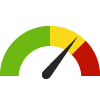



U.S. States
The distribution is based on data from 50 U.S. states and the District of Columbia.

US Value
(71.7%)
The regional value is compared to the national value.

Trend
This comparison measures the indicator’s values over multiple time periods.<br>The Mann-Kendall Test for Statistical Significance is used to evaluate the trend<br>over 4 to 10 periods of measure, subject to data availability and comparability.
State: Kansas Workers who Walk to Work American Community Survey 5-Year
State: Kansas Workers who Walk to Work
2.3%
(2018-2022)
Compared to:
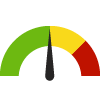



U.S. States
The distribution is based on data from 50 U.S. states and the District of Columbia.

US Value
(2.4%)
The regional value is compared to the national value.

Trend
This comparison measures the indicator’s values over multiple time periods.<br>The Mann-Kendall Test for Statistical Significance is used to evaluate the trend<br>over 4 to 10 periods of measure, subject to data availability and comparability.
State: Kansas
Economy / Employment
Value
Compared to:
State: Kansas Employer Establishments U.S. Census - County Business Patterns
State: Kansas Employer Establishments
73,982
Number of Establishments
(2020)
Compared to:



Prior Value
(74,292)
Prior Value compares a measured value with the previously measured value. Confidence intervals were not taken into account in determining the direction of the comparison.

Trend
This comparison measures the indicator’s values over multiple time periods.<br>The Mann-Kendall Test for Statistical Significance is used to evaluate the trend<br>over 4 to 10 periods of measure, subject to data availability and comparability.
State: Kansas Female Population 16+ in Civilian Labor Force American Community Survey 5-Year
State: Kansas Female Population 16+ in Civilian Labor Force
61.3%
(2018-2022)
Compared to:




U.S. States
The distribution is based on data from 50 U.S. states and the District of Columbia.

US Value
(58.5%)
The regional value is compared to the national value.

Trend
This comparison measures the indicator’s values over multiple time periods.<br>The Mann-Kendall Test for Statistical Significance is used to evaluate the trend<br>over 4 to 10 periods of measure, subject to data availability and comparability.
State: Kansas Population 16+ in Civilian Labor Force American Community Survey 5-Year
State: Kansas Population 16+ in Civilian Labor Force
62.7%
(2018-2022)
Compared to:




U.S. States
The distribution is based on data from 50 U.S. states and the District of Columbia.

US Value
(59.6%)
The regional value is compared to the national value.

Trend
This comparison measures the indicator’s values over multiple time periods.<br>The Mann-Kendall Test for Statistical Significance is used to evaluate the trend<br>over 4 to 10 periods of measure, subject to data availability and comparability.
State: Kansas Size of Labor Force U.S. Bureau of Labor Statistics
State: Kansas Size of Labor Force
1,504,670
Persons
(February 2024)
Compared to:



Prior Value
(1,497,130)
Prior Value compares a measured value with the previously measured value. Confidence intervals were not taken into account in determining the direction of the comparison.

Trend
This comparison measures the indicator’s values over multiple time periods.<br>The Mann-Kendall Test for Statistical Significance is used to evaluate the trend<br>over 4 to 10 periods of measure, subject to data availability and comparability.
State: Kansas Total Employment U.S. Census - County Business Patterns
State: Kansas Total Employment
1,188,432
Paid Employees
(2021)
Compared to:



Prior Value
(1,207,003)
Prior Value compares a measured value with the previously measured value. Confidence intervals were not taken into account in determining the direction of the comparison.

Trend
This comparison measures the indicator’s values over multiple time periods.<br>The Mann-Kendall Test for Statistical Significance is used to evaluate the trend<br>over 4 to 10 periods of measure, subject to data availability and comparability.
State: Kansas Total Employment Change U.S. Census - County Business Patterns
State: Kansas Total Employment Change
-1.5%
(2020-2021)
Compared to:





U.S. States
The distribution is based on data from 50 U.S. states and the District of Columbia.

US Value
(-4.3%)
The regional value is compared to the national value.

Prior Value
(-0.2%)
Prior Value compares a measured value with the previously measured value. Confidence intervals were not taken into account in determining the direction of the comparison.

Trend
This comparison measures the indicator’s values over multiple time periods.<br>The Mann-Kendall Test for Statistical Significance is used to evaluate the trend<br>over 4 to 10 periods of measure, subject to data availability and comparability.
State: Kansas Unemployed Workers in Civilian Labor Force U.S. Bureau of Labor Statistics
State: Kansas Unemployed Workers in Civilian Labor Force
3.2%
(February 2024)
Compared to:
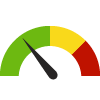




U.S. States
The distribution is based on non-seasonally-adjusted data from 50 U.S. states and the District of Columbia.

US Value
(4.2%)
The regional value is compared to the national value.

Prior Value
(2.7%)
Prior Value compares a measured value with the previously measured value. Confidence intervals were not taken into account in determining the direction of the comparison.

Trend
This comparison measures the indicator’s values over multiple time periods.<br>The Mann-Kendall Test for Statistical Significance is used to evaluate the trend<br>over 4 to 10 periods of measure, subject to data availability and comparability.
State: Kansas
Economy / Food Insecurity
Value
Compared to:
State: Kansas Child Food Insecurity Rate Feeding America
State: Kansas Child Food Insecurity Rate
13.4%
(2021)
Compared to:





U.S. States
The distribution is based on data from 50 U.S. states and the District of Columbia.

US Value
(12.8%)
The regional value is compared to the national value.

Prior Value
(14.6%)
Prior Value compares a measured value with the previously measured value. Confidence intervals were not taken into account in determining the direction of the comparison.

Trend
This comparison measures the indicator’s values over multiple time periods.<br>The Mann-Kendall Test for Statistical Significance is used to evaluate the trend<br>over 4 to 10 periods of measure, subject to data availability and comparability.
State: Kansas Community Spending on Food Claritas Consumer Spending Dynamix
State: Kansas Community Spending on Food
12.7%
(2023)
Compared to:



US Value
(12.6%)
The regional value is compared to the national value.

Prior Value
(12.7%)
Prior Value compares a measured value with the previously measured value. Confidence intervals were not taken into account in determining the direction of the comparison.
State: Kansas Food Insecurity Rate Feeding America
State: Kansas Food Insecurity Rate
9.9%
(2021)
Compared to:





U.S. States
The distribution is based on data from 50 U.S. states and the District of Columbia.

US Value
(10.4%)
The regional value is compared to the national value.

Prior Value
(9.7%)
Prior Value compares a measured value with the previously measured value. Confidence intervals were not taken into account in determining the direction of the comparison.

Trend
This comparison measures the indicator’s values over multiple time periods.<br>The Mann-Kendall Test for Statistical Significance is used to evaluate the trend<br>over 4 to 10 periods of measure, subject to data availability and comparability.
State: Kansas Households Receiving SNAP with Children American Community Survey 5-Year
State: Kansas Households Receiving SNAP with Children
48.9%
(2018-2022)
Compared to:



US Value
(47.9%)
The regional value is compared to the national value.

Trend
This comparison measures the indicator’s values over multiple time periods.<br>The Mann-Kendall Test for Statistical Significance is used to evaluate the trend<br>over 4 to 10 periods of measure, subject to data availability and comparability.
State: Kansas Households Receiving SNAP with Children (Count) American Community Survey 5-Year
State: Kansas Households Receiving SNAP with Children (Count)
39,014
Households
(2018-2022)
Compared to:


Trend
This comparison measures the indicator’s values over multiple time periods.<br>The Mann-Kendall Test for Statistical Significance is used to evaluate the trend<br>over 4 to 10 periods of measure, subject to data availability and comparability.
State: Kansas Students Eligible for the Free Lunch Program National Center for Education Statistics
State: Kansas Students Eligible for the Free Lunch Program
40.8%
(2022-2023)
Compared to:





U.S. States
The distribution is based on data from 43 U.S. states.

US Value
(42.8%)
The regional value is compared to the national value.

Prior Value
(33.5%)
Prior Value compares a measured value with the previously measured value. Confidence intervals were not taken into account in determining the direction of the comparison.

Trend
This comparison measures the indicator’s values over multiple time periods.<br>The Mann-Kendall Test for Statistical Significance is used to evaluate the trend<br>over 4 to 10 periods of measure, subject to data availability and comparability.
State: Kansas
Economy / Government Assistance
Value
Compared to:
State: Kansas Households with Cash Public Assistance Income American Community Survey 5-Year
State: Kansas Households with Cash Public Assistance Income
1.8%
(2018-2022)
Compared to:




U.S. States
The distribution is based on data from 50 U.S. states and the District of Columbia.

US Value
(2.7%)
The regional value is compared to the national value.

Trend
This comparison measures the indicator’s values over multiple time periods.<br>The Mann-Kendall Test for Statistical Significance is used to evaluate the trend<br>over 4 to 10 periods of measure, subject to data availability and comparability.
State: Kansas Kansas Medical Assistance Programs - Adults per 1000 Population, 20-64 Age-Group Kansas Department of Health and Environment
99.4
Per 1,000 population
(2022)
Compared to:



Prior Value
(44.7)
Prior Value compares a measured value with the previously measured value. Confidence intervals were not taken into account in determining the direction of the comparison.

Trend
This comparison measures the indicator’s values over multiple time periods.<br>The Mann-Kendall Test for Statistical Significance is used to evaluate the trend<br>over 4 to 10 periods of measure, subject to data availability and comparability.
State: Kansas Kansas Medical Assistance Programs - Children per 1000 Population, 0-19 Age-Group Kansas Department of Health and Environment
465.1
Per 1,000 population
(2022)
Compared to:



Prior Value
(218.1)
Prior Value compares a measured value with the previously measured value. Confidence intervals were not taken into account in determining the direction of the comparison.

Trend
This comparison measures the indicator’s values over multiple time periods.<br>The Mann-Kendall Test for Statistical Significance is used to evaluate the trend<br>over 4 to 10 periods of measure, subject to data availability and comparability.
State: Kansas
Economy / Housing & Homes
Value
Compared to:
State: Kansas Community Spending on Housing Claritas Consumer Spending Dynamix
State: Kansas Community Spending on Housing
31.1%
(2023)
Compared to:



US Value
(32.1%)
The regional value is compared to the national value.

Prior Value
(31.1%)
Prior Value compares a measured value with the previously measured value. Confidence intervals were not taken into account in determining the direction of the comparison.
State: Kansas Home Renter Spending-to-Income Ratio Claritas Consumer Spending Dynamix
State: Kansas Home Renter Spending-to-Income Ratio
16.7%
(2023)
Compared to:



U.S. States
The distribution is based on data from 50 U.S. states and the District of Columbia.

Prior Value
(17.2%)
Prior Value compares a measured value with the previously measured value. Confidence intervals were not taken into account in determining the direction of the comparison.
State: Kansas Homeowner Spending-to-Income Ratio Claritas Consumer Spending Dynamix
State: Kansas Homeowner Spending-to-Income Ratio
14.2%
(2023)
Compared to:



U.S. States
The distribution is based on data from 50 U.S. states and the District of Columbia.

Prior Value
(14.6%)
Prior Value compares a measured value with the previously measured value. Confidence intervals were not taken into account in determining the direction of the comparison.
State: Kansas Homeowner Vacancy Rate American Community Survey 5-Year
State: Kansas Homeowner Vacancy Rate
1.3%
(2018-2022)
Compared to:




U.S. States
The distribution is based on data from 50 U.S. states and the District of Columbia.

US Value
(1.1%)
The regional value is compared to the national value.

Trend
This comparison measures the indicator’s values over multiple time periods.<br>The Mann-Kendall Test for Statistical Significance is used to evaluate the trend<br>over 4 to 10 periods of measure, subject to data availability and comparability.
State: Kansas Homeownership American Community Survey 5-Year
State: Kansas Homeownership
60.1%
(2018-2022)
Compared to:




U.S. States
The distribution is based on data from 50 U.S. states and the District of Columbia.

US Value
(57.8%)
The regional value is compared to the national value.

Trend
This comparison measures the indicator’s values over multiple time periods.<br>The Mann-Kendall Test for Statistical Significance is used to evaluate the trend<br>over 4 to 10 periods of measure, subject to data availability and comparability.
State: Kansas Housing Units U.S. Census Bureau Population and Housing Unit Estimates
State: Kansas Housing Units
1,292,622
Housing units
(2022)
Compared to:



Prior Value
(1,284,283)
Prior Value compares a measured value with the previously measured value. Confidence intervals were not taken into account in determining the direction of the comparison.

Trend
This comparison measures the indicator’s values over multiple time periods.<br>The Mann-Kendall Test for Statistical Significance is used to evaluate the trend<br>over 4 to 10 periods of measure, subject to data availability and comparability.
State: Kansas Median Household Gross Rent American Community Survey 5-Year
State: Kansas Median Household Gross Rent
$986
(2018-2022)
Compared to:



US Value
($1,268)
The regional value is compared to the national value.

Trend
This comparison measures the indicator’s values over multiple time periods.<br>The Mann-Kendall Test for Statistical Significance is used to evaluate the trend<br>over 4 to 10 periods of measure, subject to data availability and comparability.
State: Kansas Median Housing Unit Value American Community Survey 5-Year
State: Kansas Median Housing Unit Value
$189,300
(2018-2022)
Compared to:



US Value
($281,900)
The regional value is compared to the national value.

Trend
This comparison measures the indicator’s values over multiple time periods.<br>The Mann-Kendall Test for Statistical Significance is used to evaluate the trend<br>over 4 to 10 periods of measure, subject to data availability and comparability.
State: Kansas Median Monthly Owner Costs for Households without a Mortgage American Community Survey 5-Year
$592
(2018-2022)
Compared to:



US Value
($584)
The regional value is compared to the national value.

Trend
This comparison measures the indicator’s values over multiple time periods.<br>The Mann-Kendall Test for Statistical Significance is used to evaluate the trend<br>over 4 to 10 periods of measure, subject to data availability and comparability.
State: Kansas Mortgaged Owners Median Monthly Household Costs American Community Survey 5-Year
State: Kansas Mortgaged Owners Median Monthly Household Costs
$1,580
(2018-2022)
Compared to:



US Value
($1,828)
The regional value is compared to the national value.

Trend
This comparison measures the indicator’s values over multiple time periods.<br>The Mann-Kendall Test for Statistical Significance is used to evaluate the trend<br>over 4 to 10 periods of measure, subject to data availability and comparability.
State: Kansas Mortgaged Owners Spending 30% or More of Household Income on Housing American Community Survey 1-Year
22.6%
(2022)
Compared to:






U.S. States
The distribution is based on data from 50 U.S. states and the District of Columbia.

US Value
(27.8%)
The regional value is compared to the national value.

Prior Value
(22.1%)
Prior Value compares a measured value with the previously measured value. Confidence intervals were not taken into account in determining the direction of the comparison.

Trend
This comparison measures the indicator’s values over multiple time periods.<br>The Mann-Kendall Test for Statistical Significance is used to evaluate the trend<br>over 4 to 10 periods of measure, subject to data availability and comparability.

HP 2030 Target
(25.5%)
State: Kansas Overcrowded Households American Community Survey 5-Year
State: Kansas Overcrowded Households
2.0%
(2018-2022)
Compared to:



US Value
(3.4%)
The regional value is compared to the national value.

Trend
This comparison measures the indicator’s values over multiple time periods.<br>The Mann-Kendall Test for Statistical Significance is used to evaluate the trend<br>over 4 to 10 periods of measure, subject to data availability and comparability.
State: Kansas Renters Spending 30% or More of Household Income on Rent American Community Survey 5-Year
State: Kansas Renters Spending 30% or More of Household Income on Rent
43.7%
(2018-2022)
Compared to:





U.S. States
The distribution is based on data from 50 U.S. states and the District of Columbia.

US Value
(49.9%)
The regional value is compared to the national value.

Trend
This comparison measures the indicator’s values over multiple time periods.<br>The Mann-Kendall Test for Statistical Significance is used to evaluate the trend<br>over 4 to 10 periods of measure, subject to data availability and comparability.

HP 2030 Target
(25.5%)
State: Kansas Severe Housing Problems County Health Rankings
State: Kansas Severe Housing Problems
12.3%
(2016-2020)
Compared to:





U.S. States
The distribution is based on data from 50 U.S. states and the District of Columbia.

US Value
(16.7%)
The regional value is compared to the national value.

Prior Value
(12.5%)
Prior Value compares a measured value with the previously measured value. Confidence intervals were taken into account in determining the direction of the comparison.

Trend
This comparison measures the indicator’s values over multiple time periods.<br>The Mann-Kendall Test for Statistical Significance is used to evaluate the trend<br>over 4 to 10 periods of measure, subject to data availability and comparability.
State: Kansas Utilities Spending-to-Income Ratio Claritas Consumer Spending Dynamix
State: Kansas Utilities Spending-to-Income Ratio
6.2%
(2023)
Compared to:



U.S. States
The distribution is based on data from 50 U.S. states and the District of Columbia.

Prior Value
(6.4%)
Prior Value compares a measured value with the previously measured value. Confidence intervals were not taken into account in determining the direction of the comparison.
State: Kansas
Economy / Income
Value
Compared to:
State: Kansas Households that are Above the Asset Limited, Income Constrained, Employed (ALICE) Threshold United For ALICE
61.0%
(2021)
Compared to:


Prior Value
(61.4%)
Prior Value compares a measured value with the previously measured value. Confidence intervals were not taken into account in determining the direction of the comparison.
State: Kansas Households that are Asset Limited, Income Constrained, Employed (ALICE) United For ALICE
27.0%
(2021)
Compared to:


Prior Value
(26.4%)
Prior Value compares a measured value with the previously measured value. Confidence intervals were not taken into account in determining the direction of the comparison.
State: Kansas Income Inequality American Community Survey 5-Year
State: Kansas Income Inequality
0.458
(2018-2022)
Compared to:




U.S. States
The distribution is based on data from 50 U.S. states and the District of Columbia.

US Value
(0.483)
The regional value is compared to the national value.

Trend
This comparison measures the indicator’s values over multiple time periods.<br>The Mann-Kendall Test for Statistical Significance is used to evaluate the trend<br>over 4 to 10 periods of measure, subject to data availability and comparability.
State: Kansas Median Household Income American Community Survey 5-Year
State: Kansas Median Household Income
$69,747
(2018-2022)
Compared to:




U.S. States
The distribution is based on data from 50 U.S. states and the District of Columbia.

US Value
($75,149)
The regional value is compared to the national value.

Trend
This comparison measures the indicator’s values over multiple time periods.<br>The Mann-Kendall Test for Statistical Significance is used to evaluate the trend<br>over 4 to 10 periods of measure, subject to data availability and comparability.
State: Kansas Per Capita Income American Community Survey 5-Year
State: Kansas Per Capita Income
$38,108
(2018-2022)
Compared to:




U.S. States
The distribution is based on data from 50 U.S. states and the District of Columbia.

US Value
($41,261)
The regional value is compared to the national value.

Trend
This comparison measures the indicator’s values over multiple time periods.<br>The Mann-Kendall Test for Statistical Significance is used to evaluate the trend<br>over 4 to 10 periods of measure, subject to data availability and comparability.
State: Kansas
Economy / Poverty
Value
Compared to:
State: Kansas Children Living Below Poverty Level American Community Survey 5-Year
State: Kansas Children Living Below Poverty Level
13.9%
(2018-2022)
Compared to:




U.S. States
The distribution is based on data from 50 U.S. states and the District of Columbia.

US Value
(16.7%)
The regional value is compared to the national value.

Trend
This comparison measures the indicator’s values over multiple time periods.<br>The Mann-Kendall Test for Statistical Significance is used to evaluate the trend<br>over 4 to 10 periods of measure, subject to data availability and comparability.
State: Kansas Families Living Below Poverty Level American Community Survey 5-Year
State: Kansas Families Living Below Poverty Level
7.6%
(2018-2022)
Compared to:




U.S. States
The distribution is based on data from 50 U.S. states and the District of Columbia.

US Value
(8.8%)
The regional value is compared to the national value.

Trend
This comparison measures the indicator’s values over multiple time periods.<br>The Mann-Kendall Test for Statistical Significance is used to evaluate the trend<br>over 4 to 10 periods of measure, subject to data availability and comparability.
State: Kansas Households Living Below Poverty Level United For ALICE
State: Kansas Households Living Below Poverty Level
12.0%
(2021)
Compared to:


Prior Value
(12.2%)
Prior Value compares a measured value with the previously measured value. Confidence intervals were not taken into account in determining the direction of the comparison.
State: Kansas People 65+ Living Below Poverty Level American Community Survey 5-Year
State: Kansas People 65+ Living Below Poverty Level
8.2%
(2018-2022)
Compared to:




U.S. States
The distribution is based on data from 50 U.S. states and the District of Columbia.

US Value
(10.0%)
The regional value is compared to the national value.

Trend
This comparison measures the indicator’s values over multiple time periods.<br>The Mann-Kendall Test for Statistical Significance is used to evaluate the trend<br>over 4 to 10 periods of measure, subject to data availability and comparability.
State: Kansas People 65+ Living Below Poverty Level (Count) American Community Survey 5-Year
State: Kansas People 65+ Living Below Poverty Level (Count)
37,903
People
(2018-2022)
Compared to:


Trend
This comparison measures the indicator’s values over multiple time periods.<br>The Mann-Kendall Test for Statistical Significance is used to evaluate the trend<br>over 4 to 10 periods of measure, subject to data availability and comparability.
State: Kansas People Living 200% Above Poverty Level American Community Survey 5-Year
State: Kansas People Living 200% Above Poverty Level
71.7%
(2018-2022)
Compared to:




U.S. States
The distribution is based on data from 50 U.S. states and the District of Columbia.

US Value
(71.2%)
The regional value is compared to the national value.

Trend
This comparison measures the indicator’s values over multiple time periods.<br>The Mann-Kendall Test for Statistical Significance is used to evaluate the trend<br>over 4 to 10 periods of measure, subject to data availability and comparability.
State: Kansas People Living Below Poverty Level American Community Survey 5-Year
State: Kansas People Living Below Poverty Level
11.6%
(2018-2022)
Compared to:





U.S. States
The distribution is based on data from 50 U.S. states and the District of Columbia.

US Value
(12.5%)
The regional value is compared to the national value.

Trend
This comparison measures the indicator’s values over multiple time periods.<br>The Mann-Kendall Test for Statistical Significance is used to evaluate the trend<br>over 4 to 10 periods of measure, subject to data availability and comparability.

HP 2030 Target
(8.0%)
State: Kansas Poverty Status by School Enrollment American Community Survey 5-Year
State: Kansas Poverty Status by School Enrollment
10.2%
(2018-2022)
Compared to:




U.S. States
The distribution is based on data from 50 U.S. states and the District of Columbia.

US Value
(12.4%)
The regional value is compared to the national value.

Trend
This comparison measures the indicator’s values over multiple time periods.<br>The Mann-Kendall Test for Statistical Significance is used to evaluate the trend<br>over 4 to 10 periods of measure, subject to data availability and comparability.
State: Kansas Uninsured Adult Population Rate U.S. Census Bureau
State: Kansas Uninsured Adult Population Rate
13.4%
(2021)
Compared to:




US Value
(12.0% in 2016)
The state value is compared to the U.S. value.

Prior Value
(12.5%)
Prior Value compares a measured value with the previously measured value. Confidence intervals were not taken into account in determining the direction of the comparison.

Trend
This comparison measures the indicator’s values over multiple time periods.<br>The Mann-Kendall Test for Statistical Significance is used to evaluate the trend<br>over 4 to 10 periods of measure, subject to data availability and comparability.
State: Kansas Young Children Living Below Poverty Level American Community Survey 5-Year
State: Kansas Young Children Living Below Poverty Level
16.0%
(2018-2022)
Compared to:




U.S. States
The distribution is based on data from 50 U.S. states and the District of Columbia.

US Value
(18.1%)
The regional value is compared to the national value.

Trend
This comparison measures the indicator’s values over multiple time periods.<br>The Mann-Kendall Test for Statistical Significance is used to evaluate the trend<br>over 4 to 10 periods of measure, subject to data availability and comparability.
State: Kansas Youth not in School or Working American Community Survey 5-Year
State: Kansas Youth not in School or Working
1.7%
(2018-2022)
Compared to:




U.S. States
The distribution is based on data from 50 U.S. states and the District of Columbia.

US Value
(1.8%)
The regional value is compared to the national value.

Trend
This comparison measures the indicator’s values over multiple time periods.<br>The Mann-Kendall Test for Statistical Significance is used to evaluate the trend<br>over 4 to 10 periods of measure, subject to data availability and comparability.
State: Kansas
Education / Childcare & Early Childhood Education
Value
Compared to:
State: Kansas Child Care Centers County Health Rankings
State: Kansas Child Care Centers
7.0
Per 1,000 population under age 5
(2022)
Compared to:



US Value
(7.0)
The regional value is compared to the national value.

Prior Value
(6.9)
Prior Value compares a measured value with the previously measured value. Confidence intervals were not taken into account in determining the direction of the comparison.
State: Kansas Day Care Center and Preschool Spending-to-Income Ratio Claritas Consumer Spending Dynamix
State: Kansas Day Care Center and Preschool Spending-to-Income Ratio
7.8%
(2023)
Compared to:



U.S. States
The distribution is based on data from 50 U.S. states and the District of Columbia.

Prior Value
(8.0%)
Prior Value compares a measured value with the previously measured value. Confidence intervals were not taken into account in determining the direction of the comparison.
State: Kansas Home Child Care Spending-to-Income Ratio Claritas Consumer Spending Dynamix
State: Kansas Home Child Care Spending-to-Income Ratio
3.1%
(2023)
Compared to:



U.S. States
The distribution is based on data from 50 U.S. states and the District of Columbia.

Prior Value
(3.2%)
Prior Value compares a measured value with the previously measured value. Confidence intervals were not taken into account in determining the direction of the comparison.
State: Kansas
Education / Educational Attainment
Value
Compared to:
State: Kansas College Tuition Spending-to-Income Ratio Claritas Consumer Spending Dynamix
State: Kansas College Tuition Spending-to-Income Ratio
12.6%
(2023)
Compared to:



U.S. States
The distribution is based on data from 50 U.S. states and the District of Columbia.

Prior Value
(12.9%)
Prior Value compares a measured value with the previously measured value. Confidence intervals were not taken into account in determining the direction of the comparison.
State: Kansas Community Spending on Education Claritas Consumer Spending Dynamix
State: Kansas Community Spending on Education
2.3%
(2023)
Compared to:



US Value
(2.4%)
The regional value is compared to the national value.

Prior Value
(2.3%)
Prior Value compares a measured value with the previously measured value. Confidence intervals were not taken into account in determining the direction of the comparison.
State: Kansas People 25+ with a Bachelor's Degree or Higher American Community Survey 5-Year
State: Kansas People 25+ with a Bachelor's Degree or Higher
34.7%
(2018-2022)
Compared to:




U.S. States
The distribution is based on data from 50 U.S. states and the District of Columbia.

US Value
(34.3%)
The regional value is compared to the national value.

Trend
This comparison measures the indicator’s values over multiple time periods.<br>The Mann-Kendall Test for Statistical Significance is used to evaluate the trend<br>over 4 to 10 periods of measure, subject to data availability and comparability.
State: Kansas People 25+ with a High School Diploma or Higher American Community Survey 5-Year
State: Kansas People 25+ with a High School Diploma or Higher
91.8%
(2018-2022)
Compared to:




U.S. States
The distribution is based on data from 50 U.S. states and the District of Columbia.

US Value
(89.1%)
The regional value is compared to the national value.

Trend
This comparison measures the indicator’s values over multiple time periods.<br>The Mann-Kendall Test for Statistical Significance is used to evaluate the trend<br>over 4 to 10 periods of measure, subject to data availability and comparability.
State: Kansas Student Loan Spending-to-Income Ratio Claritas Consumer Spending Dynamix
State: Kansas Student Loan Spending-to-Income Ratio
4.6%
(2023)
Compared to:



U.S. States
The distribution is based on data from 50 U.S. states and the District of Columbia.

Prior Value
(4.8%)
Prior Value compares a measured value with the previously measured value. Confidence intervals were not taken into account in determining the direction of the comparison.
State: Kansas Vocational, Technical, and Other School Tuition Spending-to-Income Ratio Claritas Consumer Spending Dynamix
1.6%
(2023)
Compared to:



U.S. States
The distribution is based on data from 50 U.S. states and the District of Columbia.

Prior Value
(1.7%)
Prior Value compares a measured value with the previously measured value. Confidence intervals were not taken into account in determining the direction of the comparison.
State: Kansas
Education / School Environment
Value
Compared to:
State: Kansas Student-to-Teacher Ratio National Center for Education Statistics
State: Kansas Student-to-Teacher Ratio
12.9
Students per teacher
(2022-2023)
Compared to:





U.S. States
The distribution is based on data from 50 U.S. states and the District of Columbia.

US Value
(15.4)
The regional value is compared to the national value.

Prior Value
(12.7)
Prior Value compares a measured value with the previously measured value. Confidence intervals were not taken into account in determining the direction of the comparison.

Trend
This comparison measures the indicator’s values over multiple time periods.<br>The Mann-Kendall Test for Statistical Significance is used to evaluate the trend<br>over 4 to 10 periods of measure, subject to data availability and comparability.
State: Kansas
Education / Student Performance K-12
Value
Compared to:
State: Kansas 4th Grade Students Proficient in English/Language Arts Kansas State Department of Education
State: Kansas 4th Grade Students Proficient in English/Language Arts
42.8%
(2023)
Compared to:



Prior Value
(41.9%)
Prior Value compares a measured value with the previously measured value. Confidence intervals were not taken into account in determining the direction of the comparison.

Trend
This comparison measures the indicator’s values over multiple time periods.<br>The Mann-Kendall Test for Statistical Significance is used to evaluate the trend<br>over 4 to 10 periods of measure, subject to data availability and comparability.
State: Kansas 4th Grade Students Proficient in Math Kansas State Department of Education
State: Kansas 4th Grade Students Proficient in Math
37.6%
(2023)
Compared to:



Prior Value
(34.7%)
Prior Value compares a measured value with the previously measured value. Confidence intervals were not taken into account in determining the direction of the comparison.

Trend
This comparison measures the indicator’s values over multiple time periods.<br>The Mann-Kendall Test for Statistical Significance is used to evaluate the trend<br>over 4 to 10 periods of measure, subject to data availability and comparability.
State: Kansas 8th Grade Students Proficient in English/Language Arts Kansas State Department of Education
State: Kansas 8th Grade Students Proficient in English/Language Arts
20.8%
(2023)
Compared to:



Prior Value
(20.2%)
Prior Value compares a measured value with the previously measured value. Confidence intervals were not taken into account in determining the direction of the comparison.

Trend
This comparison measures the indicator’s values over multiple time periods.<br>The Mann-Kendall Test for Statistical Significance is used to evaluate the trend<br>over 4 to 10 periods of measure, subject to data availability and comparability.
State: Kansas 8th Grade Students Proficient in Math Kansas State Department of Education
State: Kansas 8th Grade Students Proficient in Math
22.8%
(2023)
Compared to:



Prior Value
(20.3%)
Prior Value compares a measured value with the previously measured value. Confidence intervals were not taken into account in determining the direction of the comparison.

Trend
This comparison measures the indicator’s values over multiple time periods.<br>The Mann-Kendall Test for Statistical Significance is used to evaluate the trend<br>over 4 to 10 periods of measure, subject to data availability and comparability.
State: Kansas High School Graduation Annie E. Casey Foundation
State: Kansas High School Graduation
89.1%
(2022)
Compared to:




Prior Value
(88.2%)
Prior Value compares a measured value with the previously measured value. Confidence intervals were not taken into account in determining the direction of the comparison.

Trend
This comparison measures the indicator’s values over multiple time periods.<br>The Mann-Kendall Test for Statistical Significance is used to evaluate the trend<br>over 4 to 10 periods of measure, subject to data availability and comparability.

HP 2030 Target
(90.7%)
State: Kansas
Environmental Health / Built Environment
Value
Compared to:
State: Kansas Access to Exercise Opportunities County Health Rankings
State: Kansas Access to Exercise Opportunities
79.9%
(2024)
Compared to:




U.S. States
The distribution is based on data from 50 U.S. states and the District of Columbia.

US Value
(84.1%)
The regional value is compared to the national value.

Prior Value
(79.7%)
Prior Value compares a measured value with the previously measured value. Confidence intervals were not taken into account in determining the direction of the comparison.
State: Kansas Access to Parks National Environmental Public Health Tracking Network
State: Kansas Access to Parks
47.5%
(2020)
Compared to:



U.S. States
The distribution is based on data from 50 U.S. states and the District of Columbia.

Prior Value
(26.1%)
Prior Value compares a measured value with the previously measured value. Confidence intervals were not taken into account in determining the direction of the comparison.
State: Kansas Food Environment Index County Health Rankings
State: Kansas Food Environment Index
7.1
(2024)
Compared to:





U.S. States
The distribution is based on data from 50 U.S. states and the District of Columbia.

US Value
(7.7)
The regional value is compared to the national value.

Prior Value
(7.0)
Prior Value compares a measured value with the previously measured value. Confidence intervals were not taken into account in determining the direction of the comparison.

Trend
This comparison measures the indicator’s values over multiple time periods.<br>The Mann-Kendall Test for Statistical Significance is used to evaluate the trend<br>over 4 to 10 periods of measure, subject to data availability and comparability.
State: Kansas Liquor Store Density U.S. Census - County Business Patterns
State: Kansas Liquor Store Density
20.4
Stores per 100,000 population
(2021)
Compared to:
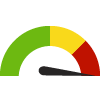




U.S. States
The distribution is based on data from 50 U.S. states and the District of Columbia.

US Value
(10.7)
The regional value is compared to the national value.

Prior Value
(20.4)
Prior Value compares a measured value with the previously measured value. Confidence intervals were not taken into account in determining the direction of the comparison.

Trend
This comparison measures the indicator’s values over multiple time periods.<br>The Mann-Kendall Test for Statistical Significance is used to evaluate the trend<br>over 4 to 10 periods of measure, subject to data availability and comparability.
State: Kansas Proximity to Highways National Environmental Public Health Tracking Network
State: Kansas Proximity to Highways
6.7%
(2020)
Compared to:



U.S. States
The distribution is based on data from 50 U.S. states and the District of Columbia.

Prior Value
(6.2%)
Prior Value compares a measured value with the previously measured value. Confidence intervals were not taken into account in determining the direction of the comparison.
State: Kansas
Environmental Health / Toxins & Contaminants
Value
Compared to:
State: Kansas Public Water Supply - Percent of Population Served Unaffected by SDWA Coliform Violations Kansas Department of Health and Environment
99.9%
Percentage
(2022)
Compared to:



Prior Value
(100.0%)
Prior Value compares a measured value with the previously measured value. Confidence intervals were not taken into account in determining the direction of the comparison.

Trend
This comparison measures the indicator’s values over multiple time periods.<br>The Mann-Kendall Test for Statistical Significance is used to evaluate the trend<br>over 4 to 10 periods of measure, subject to data availability and comparability.
State: Kansas Public Water Supply - Percent of Population Served Unaffected by SDWA Nitrate Violations Kansas Department of Health and Environment
99.7%
Percentage
(2022)
Compared to:



Prior Value
(99.8%)
Prior Value compares a measured value with the previously measured value. Confidence intervals were not taken into account in determining the direction of the comparison.

Trend
This comparison measures the indicator’s values over multiple time periods.<br>The Mann-Kendall Test for Statistical Significance is used to evaluate the trend<br>over 4 to 10 periods of measure, subject to data availability and comparability.
State: Kansas
Environmental Health / Weather & Climate
Value
Compared to:
State: Kansas Daily Dose of UV Irradiance National Environmental Public Health Tracking Network
State: Kansas Daily Dose of UV Irradiance
4,077.0
Joule per square meter
(2020)
Compared to:



Prior Value
(3,673.0)
Prior Value compares a measured value with the previously measured value. Confidence intervals were not taken into account in determining the direction of the comparison.

Trend
This comparison measures the indicator’s values over multiple time periods.<br>The Mann-Kendall Test for Statistical Significance is used to evaluate the trend<br>over 4 to 10 periods of measure, subject to data availability and comparability.

